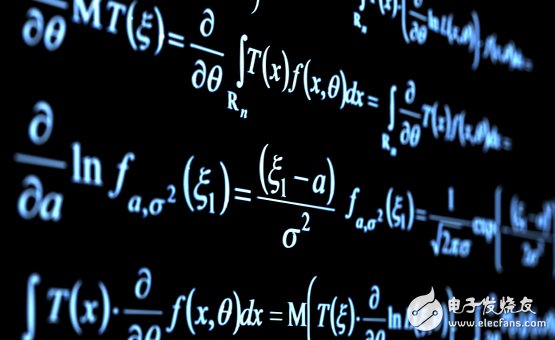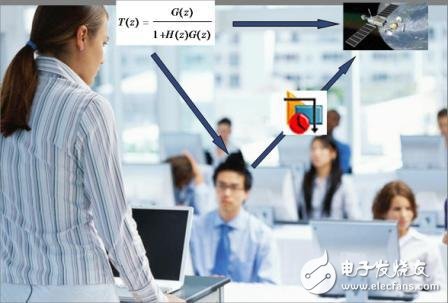The author, maxfiner, graduated from Xi'an University of Electronic Science and Technology with a master's degree in signal and information processing. Maxfiner has worked in the wireless communication department of Huawei Communication Technology Co., Ltd., and has many years of experience in engineering project development. It also has algorithm theory research, simulation verification, and corresponding hardware design implementation capabilities. It has practical experience in all aspects of communication physical layer development and design. .
Proficient in signal processing design, small TIps (2): the role of mathematics
For engineers in engineering, is mathematics useful? How useful is it? What do you use? I believe that it is a problem that many people have considered and cared about. In conjunction with the direction of electronic engineering, this will be discussed briefly and communicated with everyone.
For the direction of electronic engineering, there are generally several mathematics courses in the university: calculus, linear algebra, probability theory, complex variable function, stochastic process, matrix theory, numerical analysis, etc. But for most people, after attending the work, everyone will feel that most of the content is basically forgotten. why? The reason is simple, because it is no longer used. For many specific engineering fields, most of these courses are not very useful. As far as my personal work experience is concerned, after work, I am mainly engaged in the application and implementation of the communication physical layer. Calculus is rarely applied directly. Besides the higher mathematics teacher, who else will pay attention to the Cauchy median theorem? The complex variable function has not been dealt with once in many years. In these courses, relatively speaking, the two are used more, one is the Fourier transform and the other is the linear algebra. The most frequently used is the high-level knowledge, such as complex numbers, trigonometric functions, elementary functions, and so on.

Just like spending a lot of time learning English from the first year of junior high school, it is still a deaf-mute English. It takes a lot of time and effort to learn so many courses at the university, but it is not very useful. It is really regrettable to think about it. Looking back now, if I go to college only for the final diploma, I would rather not. In reality, the design experience of a single-chip practical circuit, or the skillful writing of a piece of software code, is far more realistic than the proof of Taylor's theorem.
As such, it seems that the mathematics of the university is not useful. This conclusion does not have to be rushed to fall. Let me talk about the specific mathematical applications I encountered in my work practice. Spectrum analysis requires the use of Fourier transform, which is one of the most widely used in many fields of university mathematics. The proof of the sampling theorem and a better understanding also use the Fourier transform. Digital up-conversion will involve integration and difference in trigonometric functions. Complex operations are used in circuit impedance analysis. Some logic operations are involved in the FPGA implementation. The FIR filtering process is a multiply and accumulate operation from the implementation point of view, behind which is the different processing of various spectral components. The widely used associated cumulative operation is also a multiply-accumulate operation. Processing such as symbol synchronization, frequency offset estimation, channel compensation, etc., involves complex multiplication and multiplication operations.
From the above typical applications, quite a number of digital signal processing applications are inseparable from multiply and accumulate operations, such as correlation, convolution, filtering, etc., the specific implementation of Fourier transform - discrete Fourier transform, its implementation The way is also multiply and accumulate. This is also the charm of digital signal processing, a simple multiply and accumulate operation that solves a variety of problems in various forms. The principle and essence of a cumulative operation is based on the premise of a linear time-invariant system. Therefore, linear operations and linear systems that are closely connected to them are a part that we must understand.
I have to mention the Fourier transform, which is the most important application of university mathematics in engineering practice for engineers in electrical engineering and communication signal processing. For example, the time shift and frequency shift of the signal, the up-and-down conversion of the signal, the conjugate symmetry of the real signal, the difference between the complex signal and the real signal spectrum, the digital sampling of the analog signal, the bandpass sampling of the signal, the aliasing and anti-spectrum of the spectrum. Aliasing, mirroring of the spectrum, interpolation processing in upsampling, decimation processing in downsampling, etc., can all be interpreted and analyzed from the perspective of Fourier transform. A comprehensive understanding of continuous and discrete Fourier transforms helps us to more deeply interpret and analyze various problems in specific applications.
When using MATLAB to do some simulation of signal processing algorithms, I really realized the application value and great power of linear algebra. Since signal processing is handled by discrete samples, signal processing algorithms and implementations can be expressed and analyzed in terms of vectors and matrices. For example, the simplest multiply and accumulate operation can be seen as the multiplication of two vectors. The most basic and frequent operations of signal processing, such as correlation, convolution, filtering, and Fourier transform, can all be expressed in simple vector and matrix forms.
Linear algebra probably studies several general directions: solution equations, eigenvalue analysis, singular value analysis, and stability analysis. The most common applications in specific engineering are basic vector operations and solving equations. The understanding of vector operations is very helpful for the flexible use of MATLAB, because MATLAB is vector-oriented, vector operations are much more efficient than for loops.
When I first learned the feature value, I still couldn't understand the usefulness of this feature value. I haven't seen it useful for many years. However, when I needed to understand the principles of the LMS adaptive algorithm because of my work, I felt the value of the eigenvalues ​​for the first time. Anyone familiar with the LMS algorithm knows that each iteration of the LMS involves a stepping constant, and how large this constant should be, is closely related to the eigenvalues ​​of the signal correlation matrix. Teacher Zhang Xianda once wrote a monograph devoted to the application of linear algebra in signal processing. From this, we can see the application of many eigenvalues, norms, singular values ​​and other concepts in signal processing.

Many signal processing algorithms need to solve equations. Solving equations involves a variety of matrix decomposition methods. It is appropriate to implement these matrix decomposition algorithms based on DSP digital signal processors. However, for applications with higher real-time requirements, more FPGA-based hardware implementations, matrix decomposition is not used much, and more alternative methods are used, such as iterative-based methods. Like the LMS algorithm mentioned above, it is an alternative to the LS algorithm that requires matrix decomposition. Because the iterative method is more convenient to implement with FPGA.
My personal experience is very limited, only a small part of the application of signal processing in communication, in my mouse light, for the general circuit design, software design, logic design and many other fields, the practical application of mathematics in universities Not too much, the association is not very big, and more is to play a theoretical support and understanding role. But for the field of algorithms, such as communication signal processing, radar signal processing, pattern recognition, data mining, information retrieval, etc., the university's mathematical knowledge still has quite a lot of use.
In addition, it also has a lot to do with China's current development status. There are still few engineering application groups and companies that really involve a lot of mathematics knowledge, and most of them are in the primary and shallow applications. To try two examples, the first one, there are hundreds of manufacturers in China for video surveillance, but most of them are in the primary applications of image acquisition, image compression coding, image transmission and display in multiple formats, involving image targets. There are very few products for applications such as detection, image segmentation, and image target recognition. And these are the places that really involve a lot of math and signal processing algorithms, reflecting the charm and value of the algorithm. In the second case, there is a home automatic sweeper on the market, which can automatically charge and automatically clean the ground. However, for the traversal of the room floor, most sweepers use a very simple random search method, which is so inefficient that some sweepers From time to time, the following voice is issued: "I am stupid, but I am very diligent!". Or say: "Please don't keep staring at me." This is also a helpless move. Efficient traversal of the room floor must be supported by a set of detection and recognition algorithms that better reflect the value of mathematics and algorithms.
In real engineering practice, the practical use of physics and chemistry is larger and wider. The physicists, chemists, biologists, medical scientists, etc., who have a huge impact on society and have a great driving force, are relatively few. Some people say that mathematics is beautiful and the description is very exaggerated. Maybe the parties do have this feeling. My personal feeling is that the laws of physics are more beautiful than pure mathematical formulas. For most engineering practitioners, mathematics is useful, but it is just a tool. It is far from the first priority. In the first place, it is always a simple and efficient way to solve practical problems.
The time is limited, the ability is even more limited, and I talked a lot about these and the electronic enthusiast network engineers. I hope that everyone will correct me, and suggestions and criticism will be more beneficial.
The next issue begins - proficient in signal processing design, small TIps (3): the three cornerstones that signal processing applications must master , so stay tuned!
Disclaimer: Electronic enthusiast network copyright, declined to reprint!
Past review
Proficient in Signal Processing Design Small TIps(1): Signals and Information
Inline optical attenuators, generating a adjustable Loss to the fiber optic link, are customer manufactured to meet the length and connector type for the customers needs. Meanwhile,they are high attenuation accuracy and hard working temperature from -40 C to +75 C. Fiber Inline attenuator values are available in 1db increments for 1db to 30db. A series of variable Fiber Optic Attenuator include SC ,FC, LC, ST, MU, SC/APC ,FC/APC fiber attenautor.Foclink,a reliable supplier of Inline Optical Attenuator is always beside u 7*24.
Inline Optical Attenuator
Inline Optical Attenuator,Inline Attenuator,Optical Attenuator
Foclink Co., Ltd , https://www.scfiberpigtail.com